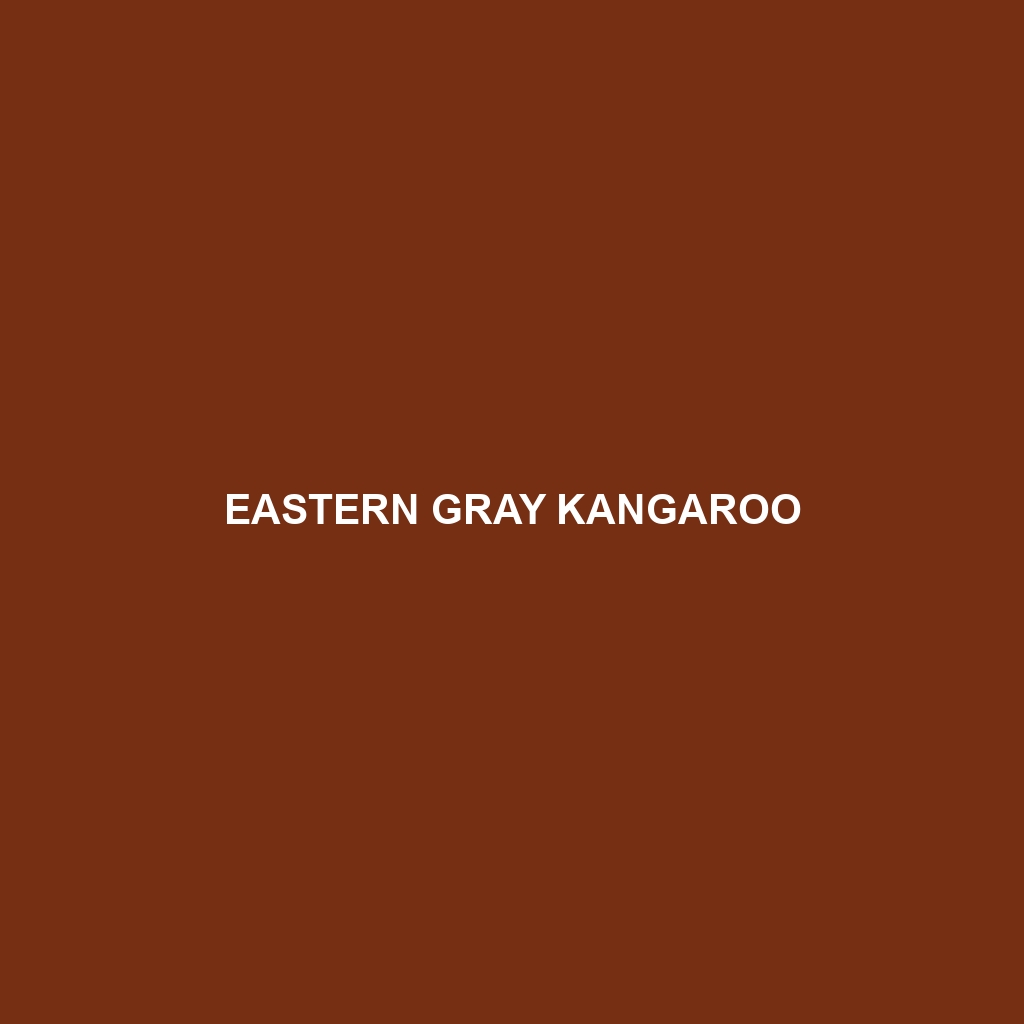Eastern Gray Kangaroo (Macropus giganteus) Overview
The Eastern Gray Kangaroo is a large marsupial native to Australia, known for its powerful hind legs, large feet, and long tail which it uses for balance and support. This iconic species is incredibly well-adapted to its environment and is often found in a variety of habitats across eastern Australia. The Eastern Gray Kangaroo is one of the most recognizable symbols of Australian wildlife.
Physical Characteristics
Size: The Eastern Gray Kangaroo is one of the largest kangaroo species. Adult males, known as “boomers,” can reach up to 6.6 feet (2 meters) in height and weigh around 120-200 pounds (54-90 kg), while adult females, or “flyers,” are generally smaller, reaching up to 5.5 feet (1.7 meters) in height and weighing between 50-110 pounds (23-50 kg).
Coloration: Their fur is predominantly gray with a slight brown tinge, and they have a lighter-colored underbelly. The fur around their faces is often paler, sometimes almost white, with a darkened area around the eyes.
Special Features: Eastern Gray Kangaroos have a distinctive body structure with strong, muscular hind legs designed for powerful, efficient hopping. Their long, thick tails provide balance while moving and act as a fifth limb when they sit or move slowly. Their forelimbs are much shorter and are used primarily for feeding and grooming.
Behavior and Social Interaction
Social Structure: Eastern Gray Kangaroos are social animals that live in groups known as “mobs,” which can range from a few individuals to several dozen. These groups typically consist of females and their young, led by a dominant male who protects the group and has breeding rights.
Feeding Habits: They are primarily grazers, feeding on a variety of grasses, herbs, and shrubs. Their diet is highly influenced by seasonal availability, and they are known to travel great distances in search of food and water during dry periods.
Reproduction: Female kangaroos can give birth to one joey at a time, which is born extremely underdeveloped and continues to grow in the mother’s pouch for about six months before emerging. Even after leaving the pouch, the joey will continue to nurse and stay close to the mother for several more months.
Ecological Roles and Habitat
Habitat: Eastern Gray Kangaroos are highly adaptable and can be found in a range of environments from coastal areas to inland plains, woodlands, and even in some suburban areas. They prefer habitats with ample grass for grazing and access to shelter like trees or shrubs.
Ecological Role: As herbivores, they play a significant role in their ecosystem by aiding in seed dispersal and maintaining the balance of vegetation through their grazing habits. Their presence also supports a variety of predators and scavenger species.
Adaptations
Locomotion: Their unique mode of locomotion, hopping, is highly efficient for covering large distances with minimal energy expenditure. This is crucial for survival in the vast and often arid Australian landscape.
Water Conservation: Adapted to sometimes harsh environments, Eastern Gray Kangaroos can survive on little water, obtaining moisture from their food and reducing water loss by staying in the shade during the hottest parts of the day.
Conservation Status
The Eastern Gray Kangaroo is currently classified as “Least Concern” by the International Union for Conservation of Nature (IUCN). Their populations are stable and widespread, although they face threats from habitat destruction, vehicle collisions, and, in some areas, hunting and culling.
Fun Facts
Speed and Agility: Eastern Gray Kangaroos can reach speeds of up to 35 miles per hour (56 km/h) and can leap over obstacles as high as 10 feet (3 meters) in a single bound.
Communication: They communicate with each other through a variety of vocalizations and physical gestures, including thumping the ground with their feet to signal danger.
Unique Reproductive Strategy: Female kangaroos can delay implantation of an embryo, allowing them to time the birth of their joey to coincide with favorable environmental conditions.
By showcasing the Eastern Gray Kangaroo’s fascinating attributes, behaviors, and ecological importance, your website can provide visitors with a comprehensive understanding of this remarkable species.
